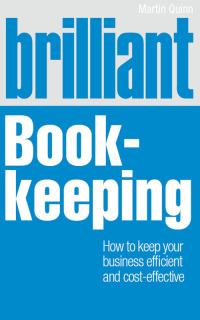Question
The project requires to completing an Excel-based financial model template. Such models are extensively used in business planning, decision-making, and for obtaining business financing., making
The project requires to completing an Excel-based financial model template. Such models are extensively used in business planning, decision-making, and for obtaining business financing., making but also emphasizes critical thinking and general business skills. Specifically, the case has the following objectives: (1) to obtain experience using Excel within a planning and decision context; (2) to integrate a range of managerial and financial accounting concepts; and (3) to reinforce financial statement relationships through linking projected financial statements.
You will completing a financial planning model that is derived from a set of assumptions and link together statements of projected cash, income and balance sheets that articulate. An Excel template, which is available for downloading, is structured with a separate worksheet (or tab) for each of the following sections: Sheet (1) Assumptions; Sheet (2) Supporting Schedules; Sheet (3) Projected Income Statement and Balance Sheet; and Sheet (4) Projected Cash Flow.
Sheet (2) provides supporting schedules for detailed computations, which in turn links to the projected income statements and balance sheet contained within Sheet (3), along with projected cash flow in Sheet (4).
To work correctly, all cells of your model should be linked together via formulas, or cell references, across all worksheets. (A 5th sheet labeled, Graph contains data to produce a cost-volume-profit graph from current period, baseline information. You should use the ChartWizard in Excel to create the graph. The Excel template already contains the key assumptions as well as some formulas.
Within a real-life practice situation, you would need to independently develop and obtain support for the necessary assumptions that have been provided to you. In Part I of the Excel case, you should complete the model formulas and linkages to Sheets (2), (3) and (4
To accomplish this, the financial model must articulate (i.e., interconnect, or link) across all schedules and statements. Thus, a change in assumption should flow through and automatically update all related schedules in Sheet (2) and projected statements in Sheets (3) and (4). This requires entering formulas within the cells to calculate the required values, rather than hardcoding values into the cells.
OUT-WEST PRODUCTS, INC. CASE
You're Hired!
Cynthia Valley formed Out-West Products, Inc. (OWP) in 2020 when she obtained an exclusive franchise to nationally distribute a pen-based input device that provides effortless communication with standard personal computers. Recent high sales growth of the base model pen-based input device (PID-B), along with expected sales growth for a new premium model (PID-P), requires adding new management team members. The Company hires you as a management trainee to assume direct responsibility for financial planning activities. Your first assignment is to preparing a financial plan for the next three months, starting July 1.
CASH COOLECTION PATTERN is as follows:
30% of a month's sales are collected by month-end. An additional 40% is collected in the month following, and the remaining 30% is collected in the second month following sale. Thus far bad debts have been negligible.
Since OWP's policy is to never stock out of its pen-based input devices (PIDs), and potentially forfeit market share to competitors, the Company maintains fairly high inventory levels.
Therefore, desired ending inventories are equal to 70% of the next month's sales in units.
Prior to June, OWP sold only the basic model PID-B at a price of $230 per unit. The PID-B costs OutWest Products $155 each from the manufacturer and it pays for purchases as follows:
CASH Disbursements PATTERN is as follows:
60% in the month of purchase and the remaining 40% the following month.
The company's monthly operating expenses (organized by cost behavior) are also provided in the Assumptions Sheet of the excel template. All operating expenses are paid during the month, in cash, with the exception of depreciation and insurance expenses.
New fixed assets, including personal computers and office furniture, will be purchased during September for $90,000 cash. Ignore depreciation for these newly acquired since they are insignificant. The Company declares dividends of $20,000 each quarter, payable in the first month of the following quarter.
OWP's actual balance sheet at June 30, 2020 is provided at the end of the template's Assumptions Sheet.
However, the Company also desires a minimum ending cash balance each month of $35,000 to meet regular operating expenses. Assume borrowings occur at the beginning of the period. To further simplify, assume no tax consequences.
REQUIRED:
Financial Planning Model
Complete Sheet 2 (Schedules)
- Sales and merchandise purchase plans with supporting schedules.
- A sales plan by month and in total - including a schedule of projected cash collections from sales
and accounts receivable, by month and in total.
- A purchases plan in units and in dollars, including a schedule of projected cash payments for
purchases, by month and in total.
[Note: The cost of inventory on hand is released to cost of goods sold before costs for the purchase of additional units (i.e., use a FIFO cost flow assumption for all months).]
Complete Sheet 3 (Inc. St. and Bal. Sheet)
- Projected contribution format income statements by month and in total.
- Projected balance sheet for the quarter as of September30.
Complete Sheet 4 (Statements of Cash Flow)
- Projected statements of cash by month and in total - internal budget format.
Graph
Use the data in the Graph worksheet to creating a cost-volume-profit graph.
Highlight the cells A13:H16. Click insert and Select a line chart type for the CVP graph (your choice of style).
Be sure that your graph closely resembles a standard CVP graph
Step by Step Solution
There are 3 Steps involved in it
Step: 1

Get Instant Access to Expert-Tailored Solutions
See step-by-step solutions with expert insights and AI powered tools for academic success
Step: 2

Step: 3

Ace Your Homework with AI
Get the answers you need in no time with our AI-driven, step-by-step assistance
Get Started


